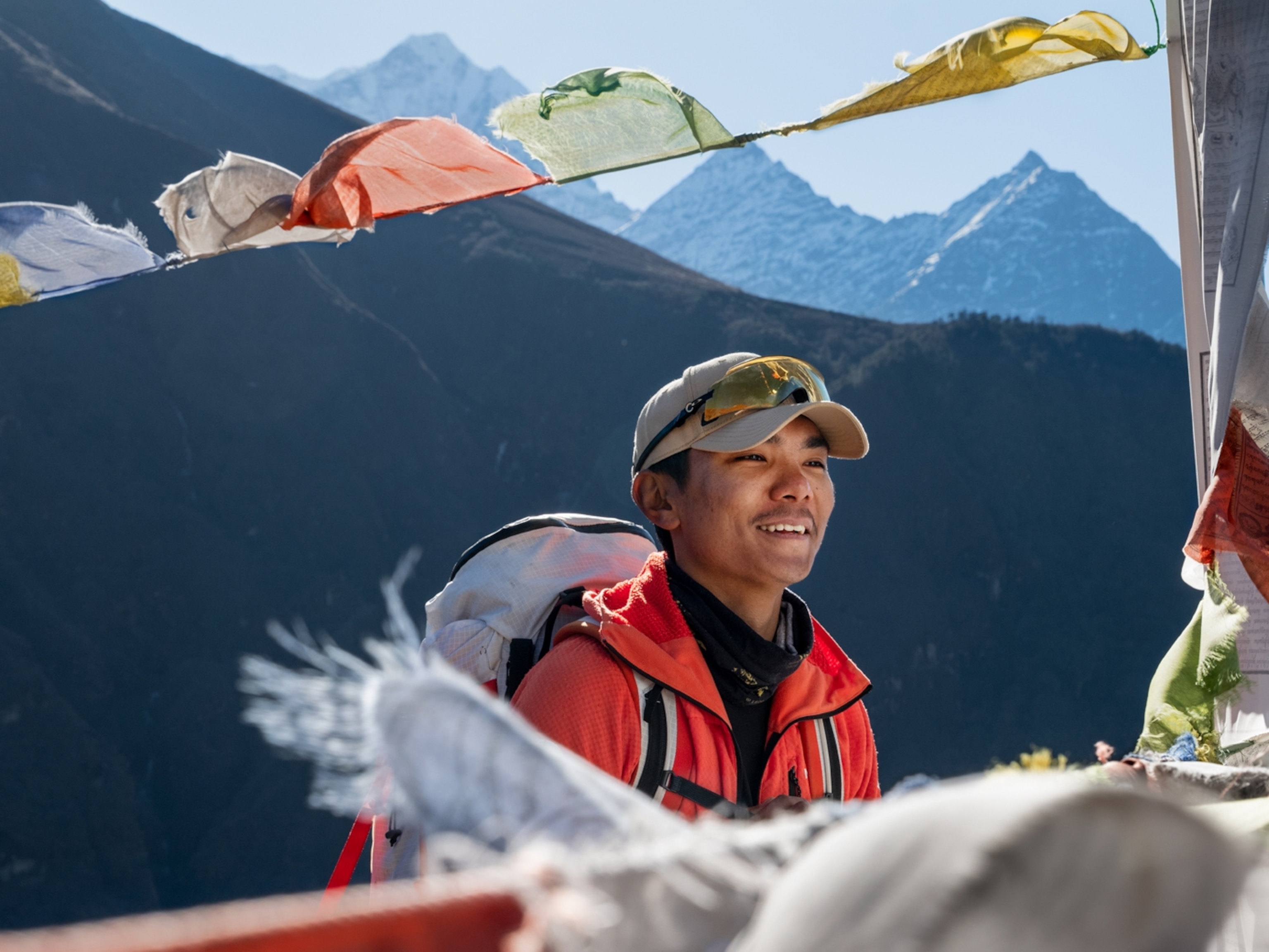
Mapping the Killer Path of the Everest Avalanche
An experienced climber takes a detailed look at the dangers of the Khumbu Icefall.
Mount Everest's Khumbu Icefall, the site of the Friday avalanche that killed at least 16 climbers, is an unavoidable gauntlet for those climbing the mountain from the Nepal (south) side.
Over a half mile wide, bounded on both sides by sheer rock walls covered with hanging glaciers, the icefall is always dangerous. There is no safe route through the tumble of ever-shifting, jagged, building-size blocks of ice. (Related: "Sherpas Killed on Everest Cremated as Survivors Call for Boycott.")
In the above photo, taken during 2012's spring climbing season, the red line marks the route now used by climbing expeditions to cross the icefall. For those who climb the Southeast Ridge of Everest, this is the standard and "easiest" route up the mountain. (Related: "Climbing Finished for Season on Everest After Deadly Avalanche?")
Over the years, climbers have given various parts of the route descriptive names, including the Popcorn Field, where the huge chunks of ice resemble popcorn; the Football Field, a relatively wide, flat section; and the Ballroom of Death, where seracs hang directly above and there is no escape if one of them calves.
A glacier is nothing more than a river of ice, and an icefall—similar to a waterfall—is merely a region where this rush of ice drops over a rock precipice. The ice above breaks apart into huge chunks, called seracs, and the ice below fractures, creating deep crevasses. Everything in the Khumbu is on a giant scale, so seracs can be 100-foot-high (30 meters) towers of ice, and crevasses can be 100-foot-wide canyons in the ice.
Over the past 60 years, a number of different routes have been taken through the Khumbu Icefall.
In the 1990s, the route went directly up the gut of the beast. This line avoided the dangers of the continuously calving hanging glaciers on the walls on either side, but it had the disadvantage of being technically difficult and slow.
In recent years, guides have chosen a line through the icefall that hugs the left side of the icefall, providing a faster track through the hazards.
This passage through the icefall is much smoother and easier, especially for the large numbers of climbers who have come to the mountain in recent years with little mountaineering experience. But it has the clear disadvantage of passing right below the glaciers hanging off the lower West Shoulder of Everest.
The Sherpas killed last week were passing under one of these hanging glaciers when a massive serac broke off, sending enormous blocks of ice down right on top of them. (Related: "Mount Everest's Deadliest Day Puts Focus on Sherpas.")
Climbers have been captivated by this part of the journey since the first modern mountaineers began attempting to climb Everest more than a century ago.
In 1921 George Mallory—who would famously disappear higher up on Everest in 1924—looked at the Khumbu Icefall and decided it could not be climbed, describing it as "terribly steep and broken." That's why all the early attempts on Everest were from the north side of the mountain, through Tibet.
In 1950, an American Everest reconnaissance team, including renowned climber Charlie Houston, "confirmed the estimate made by Mallory in 1921: passage up the Western Cwm would be difficult or impossible."
The successful 1953 expedition led by British Army Colonel John Hunt, which saw Edmund Hillary and Tenzing Norgay become the first to summit Everest, climbed through the Khumbu solely because all the attempts from the north had failed.
No one died in the icefall on that pioneering ascent, but a decade later, in 1963, during the first American ascent of Everest, Jake Breitenbach, 25, from Jackson Hole, Wyoming, was killed in the Khumbu.
In the past 50 years, several dozen more people, both climbers and Sherpas, have died there, yet it is the Sherpas who bear the brunt of the risk, humping loads of gear for clients. Each climbing season, they pass through the icefall 30 to 40 times, whereas client climbers pass through only 6 to 10 times.
Read Mark Jenkins's story "Maxed Out on Everest" in National Geographic magazine.





